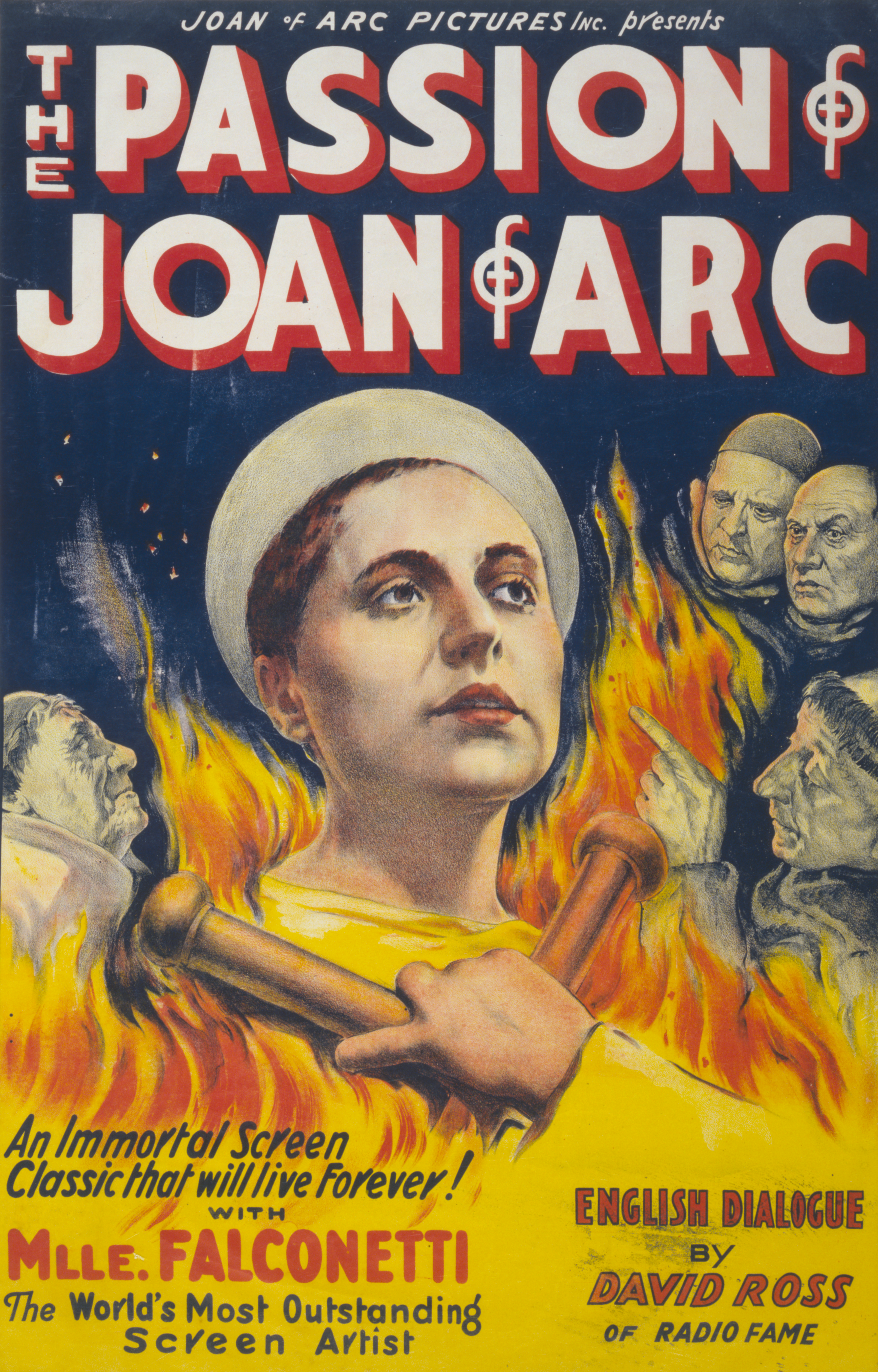Film Review: The Passion of Joan of Arc (1928)



Every year when awards season rolls around, industry giants gather together at various locations and at various times to slap each other on the back in displays of self-congratulatory grandstanding. Awards are given and accepted, and before you know it the whole thing is over, and everyone goes home to wait for it all to start again. These awards are usually titled “Best” this or “Excellence” in that, but when it comes to acting I have a suggestion. Performance awards should be called the “Renée Jeanne Falconetti Award,” or some such thing, and its winners should all be measured against the performance given by Ms. Falconetti in Carl Theodor Dreyer’s The Passion of Joan of Arc. It is the single best piece of acting ever committed to film.

The entirety of the film exists in close-ups and medium shots. Title cards are present to offer particulars of Joan’s trial for heresy in 1431, but it’s a deep expressive emotion that tells the story. Falconetti, in the second of only two screen roles in her career, is utterly hypnotic in her portrayal of the martyred teenager. Her eyes capture terror, defiance, certainty, and love in a way that can’t be compared. Her counterparts, the men of the church, offer expressions of their own, but on the opposite end of the spectrum. Theirs are piggish, brutal, ignorant, and condescending. She is beautiful and welcoming—they are fearful and disdainful. They sneer, she endures and triumphs.

In Dreyer’s film, there are no establishing shots to speak of, and the usual and familiar language of filmmaking (180° rule, cutting on action, etc.) are nowhere to be found. This thorough disregard for the “rules” leaves us disoriented and tense—just as Joan must have felt. It’s impossible to become acclimated to the film’s surroundings, as there is nothing to orient us. The lack of establishing shots prevents us from knowing the geography of each scene, and with no orientation, it’s hard to get comfortable. And that’s just how Dreyer wanted it. Pair this with the director’s disregard for the 180° rule, and a surreal sense of dizziness is created.

The script is based on transcripts from Joan’s interrogations. Her real-life questioning lasted several months, but Dreyer condensed her ordeal into roughly one scene. At every turn, the inquisitors attempt to trap her with some holy logic—smugly grinning and patting themselves on the back as they do so— but she outsmarts them at every turn. Just when they think they’ve got her painted into a corner, she escapes with a bit of her own logic and a healthy dose of bad-ass attitude. These men of God simply would not, or could not believe that a lowly farm girl could have received visions from heavenly beings. It was heresy to suggest so. When questioned about her visions, she answers in ways as to suggest they were experiences of indescribable beauty. These self-serving men could not possibly understand the spiritual magnitude of her visitation, so why bother explaining. They focus on such trivialities as her clothes and hair. She focuses on her devotion to God and her cause, the liberation of France from English rule. “I don’t know if God loves or hates the English,” she says, “but I do know that the English will all be chased from France – except those that die here!” She may not be as educated as they, but she believes her truth more than they believe theirs—and they know it.

Dreyer shows no action—no battles, no capture, no backstory. He focuses instead on Joan alone, her inquisitors and torturers. She is humiliated time and again, and is even coerced into signing a confession denying her visions. She recants, knowing it will mean her death, but she cannot betray her principles. Even with this lack of “action,” fast cutting, along with intriguing lighting and cinematography accentuates the performances. Expressionistic angles, light sources, and focus separate the protagonist from her antagonists, creating a tension that easily replaces the need for sword duels or horse chases. Falconetti’s inspired performance and Dreyer’s brilliant filmmaking are more than enough.

Cinema as breathtaking as The Passion of Joan of Arc is a rare treat. It’s also a near miracle the film exists in a capacity Dreyer would have approved of. It was censored by the Archbishop of Paris and the government of France, and the original print was lost to a fire. For nearly sixty years, any hope of seeing an original version had been lost. Then, in 1981, a canister bearing the film’s title was inexplicably found in a janitor’s closet of a Norwegian mental institution. It turned out to be a print of Dreyer’s original cut—before the French censors got a hold of it. An unbelievable conclusion to the life of an extraordinary film.
